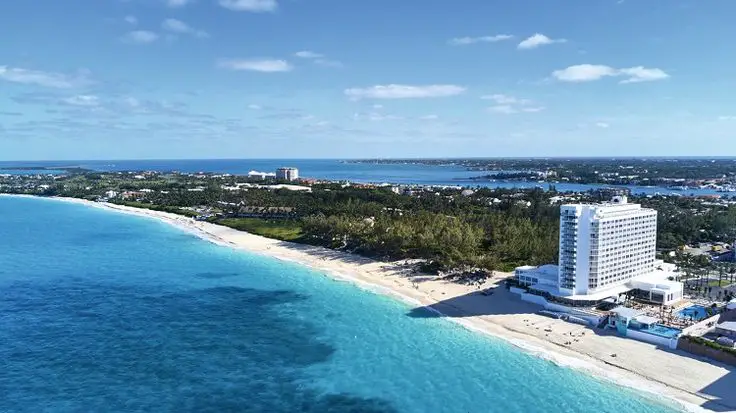If you’re planning a vacation, you may have heard that Hawaii is one of the most expensive states in the US. But why is it so expensive? It’s not just the cost of hotels or flights – there are some real reasons why Hawaii is so expensive to visit. In this blog post, we’ll take a look at the real reasons why Hawaii is one of the most expensive states in the US and what you can do to save money on your Hawaiian vacation. So read on to find out the real reason why Hawaii is one of the most expensive states in the US!
Geography and Isolation: How It Affects the Cost of Living in Hawaii
One of the biggest factors contributing to the high cost of living in Hawaii is its geography and isolation. As an archipelago, Hawaii is situated in the middle of the Pacific Ocean, making it incredibly remote. This means that nearly all goods and resources need to be imported from mainland USA, which incurs hefty shipping costs.
The remote location also means that businesses have to factor in the cost of transporting goods to Hawaii, which further drives up the prices of goods and services in the state. The high shipping costs and logistical challenges also make it more difficult for businesses to set up in Hawaii, which can result in fewer businesses, less competition, and higher prices.
Additionally, Hawaii’s geography poses unique challenges for its residents, such as the risk of natural disasters like hurricanes, earthquakes, and tsunamis. This requires infrastructure investments and insurance policies that add to the cost of living.
In short, the geography and isolation of Hawaii make it a beautiful and unique state, but also a challenging and expensive place to live.
High Cost of Housing in Hawaii
Due to the limited land available and the high demand for housing in Hawaii, housing prices have skyrocketed. In fact, Hawaii has some of the most expensive housing prices in the United States.
The high cost of housing in Hawaii is due to a variety of factors, including the state’s unique geography. The volcanic nature of the islands means that land is limited and often difficult to develop. This, in turn, drives up the cost of housing. Additionally, Hawaii’s location in the middle of the Pacific Ocean makes it more expensive to import construction materials, further increasing the cost of building new homes.
In addition to the cost of building new homes, the cost of renting and owning a home in Hawaii is also high. Many people choose to rent rather than buy a home due to the high cost of housing, but even rental prices are significantly higher than in many other parts of the country. This is due to the high demand for housing and the limited supply of available rental units.
Overall, the high cost of housing in Hawaii is a major factor contributing to the state’s high cost of living. While there are some efforts being made to increase the supply of affordable housing, it remains a significant challenge for many residents of Hawaii.
Transportation and Shipping Costs
Another major factor contributing to the high cost of living in Hawaii is the transportation and shipping costs. Due to Hawaii’s isolated location in the middle of the Pacific Ocean, it is expensive to import goods and materials to the islands. Almost everything, from food to building supplies, needs to be shipped from the mainland, which drives up the prices of goods and services in Hawaii.
Moreover, shipping costs also affect the transportation industry in Hawaii. High shipping costs make it expensive to fuel and maintain vehicles, resulting in higher transportation costs for residents and businesses. The cost of airline tickets and travel expenses to Hawaii are also more expensive than other destinations due to the high costs of transporting people and cargo to the islands.
Additionally, the shipping industry in Hawaii also faces unique challenges, such as navigating the state’s difficult and dangerous harbor channels, which can increase the cost of shipping goods and supplies. As a result, businesses in Hawaii often struggle to compete with mainland businesses due to the added costs of shipping and transportation.
Limited Natural Resources and Agricultural Challenges
Hawaii’s isolated location in the middle of the Pacific Ocean means that many goods need to be imported from mainland USA, resulting in higher prices due to transportation and shipping costs. Additionally, the state’s limited natural resources and agricultural challenges also play a role in the high cost of living in Hawaii.
Hawaii’s agricultural industry is heavily dependent on imports for fertilizer, equipment, and other materials, which increases production costs. The state’s fertile volcanic soil is ideal for growing crops such as pineapple and sugarcane, but the decline of these industries has led to a shortage of locally grown produce. This has resulted in a reliance on imported fruits and vegetables, which are subject to higher prices due to transportation and importation costs.
Moreover, Hawaii’s limited natural resources such as freshwater and energy also contribute to the state’s high cost of living. The island state relies heavily on imported oil and gas for energy, which results in higher utility costs for residents. The state also faces challenges in managing and conserving its limited freshwater resources due to its small size and population.
Overall, Hawaii’s limited natural resources and agricultural challenges play a significant role in the state’s high cost of living. While the state’s unique geography and culture are attractive to tourists, they present challenges for residents in terms of affordability and access to essential goods and services.
High Tourism Demand and Its Impact on Prices
Hawaii is one of the most popular tourist destinations in the world, and it’s not hard to see why. With its stunning beaches, lush green landscapes, and warm weather all year round, it’s no wonder that so many people choose to vacation in Hawaii.
However, this high demand for tourism has a significant impact on the cost of living in Hawaii. One of the most obvious ways that tourism affects prices is through accommodation costs. Hotels and vacation rentals in Hawaii can be exorbitantly expensive, particularly in popular tourist spots like Waikiki or Maui.
But the impact of tourism on prices goes beyond just accommodation. As tourists flood into Hawaii, they create additional demand for everything from food to transportation to souvenirs. This increased demand can cause prices to skyrocket, particularly in areas where there is limited competition.
Another issue caused by high tourism demand is that it can lead to overcrowding and strain on the island’s infrastructure. For example, traffic on the island of Oahu can be incredibly congested, particularly during peak tourist season, leading to long commute times and higher transportation costs.
Despite these challenges, tourism is a vital part of Hawaii’s economy and a major source of income for many residents. However, it’s important to be aware of the impact of tourism on prices and be prepared for higher costs when planning a trip to Hawaii.
Additional Factors Contributing to the High Cost of Living in Hawaii
In addition to the geographical challenges and high transportation costs, there are several other factors that contribute to the high cost of living in Hawaii. One such factor is the high cost of energy. Hawaii relies heavily on imported oil and gas for its energy needs, which drives up the cost of electricity and other utilities. This is due to the lack of domestic energy resources and the need to import energy from other countries or the mainland.
Another factor is the high cost of healthcare in Hawaii. The state has some of the highest healthcare costs in the US, which can be attributed to a number of factors including the small population size, the need to attract and retain healthcare professionals, and the cost of operating healthcare facilities on the islands.
Additionally, the high cost of land and property in Hawaii also contributes to the overall cost of living. The limited amount of available land, coupled with high demand from both residents and tourists, leads to skyrocketing prices for homes, rentals, and commercial properties. This makes housing and real estate expenses a major financial burden for residents.
Lastly, the high taxes in Hawaii also play a role in the high cost of living. The state has some of the highest tax rates in the country, including high income taxes and sales taxes. These taxes add to the overall cost of goods and services, making everything more expensive for residents.
Overall, the combination of these additional factors, including high energy costs, expensive healthcare, limited land availability, and high taxes, contribute to the high cost of living in Hawaii.



